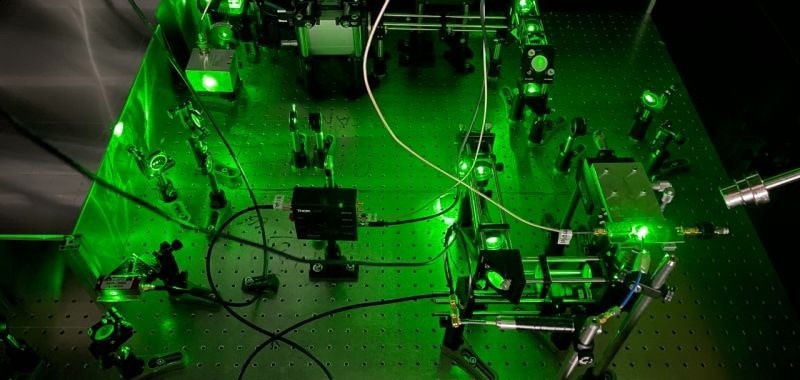Scientists from Exciton Science have come up with a pathway to improved sensitivity and higher efficiency across a range of developing quantum technologies.

Image Credit: Exciton Science
This was done by developing the first general theory to describe and anticipate nitrogen vacancy-plasmonic nanoparticle interactions present in diamonds.
The nitrogen vacancy (NV) center is a defect found in diamonds that is highly adaptable for quantum-based experimentation. It is responsive to electric and magnetic fields, strain, and temperature, and it can also be utilized as a sensor with nanoscale resolution.
The NV center can be used in a range of considerable applications, like quantum computing, mineral discovery, brain imaging, and pharmaceutical research. But its efficiency has been restricted by the optical brightness and defect collection efficiency.
The NV center in diamond provides a window into the nanoscopic world. Our goal is to make it brighter and increase the contrast.
Dr. Harini Hapuarachchi, Royal Melbourne Institute of Technology University
Experimentalists can make use of the electron oscillations (called plasmons) in metal nanoparticles to tune the NV center and also obtain increases in efficiency and brightness.
Dr. Francesco Campaioli, who collaborated with Harini at RMIT to come up with the theory, stressed the significance of separating and amplifying the optimum frequency, with the nanoparticles serving as a mini resonator.
It’s almost like the resonating chamber of a guitar. It’s a way to make sure that there's one frequency, one vibration that resonates. And everything else is dissipated and doesn't matter. Imagine that the guitar neck with the strings is the NV center.
Dr. Francesco Campaioli, ARC Center of Excellence in Exciton Science and Chemical and Quantum Physics, School of Science, Royal Melbourne Institute of Technology University
Campaioli continued, “If you pluck it, even if there's no resonating chamber, it still works. You can still hear the sound. But when you play in front of an audience, you want everybody to hear it, so you want to increase the intensity.”
Campaioli added, “If you put the right resonating chamber around it, in this case it’s the metal nanoparticle, then you hear everything better and louder.”
Coming up with the first general theory to describe such beneficial interactions presented numerous difficulties. This consists of solving non-linear differential equations, but scientists will now be equipped with the data they need to examine this technology with more trust.
I think it will prompt a lot of new experiments and a lot of improvements on existing technological applications.
Jared Cole, Professor, Royal Melbourne Institute of Technology University
Cole added, “So you can really imagine taking an existing NV center platform, in any of those applications, and putting a plasmonic coating on it, and therefore improving the sensitivity. And I think what's really nice about the model Harini's developed is that we can predict that before you start the design process.”
Diamonds are for everything: A general theory to boost quantum tech
Video Credit: Exciton Science
Journal Reference:
Hapuarachchi, H., et al. (2022) NV-plasmonics: modifying optical emission of an NV− center via plasmonic metal nanoparticles. Nanophotonics. doi.org/10.1515/nanoph-2022-0429.